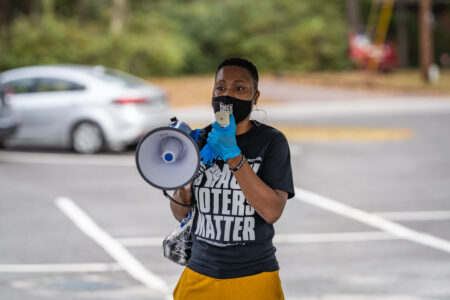For a number of breast cancer survivors, three-dimensional nipple tattooing can be an important final step in regaining their confidence and overall well-being. The following guide explains how the once-limited practice finally provides realistic, natural-looking results for darker-skinned women.
What is 3D Nipple Tattooing?
3D nipple-areola tattooing is a type of cosmetic reconstruction that entails the manual design of nipples and areolas onto the skin. It is primarily sought out by individuals who have undergone mastectomies where one or both nipples and areolas were removed.
A specialized technique, its meticulous process artfully applies color and shading to the skin in such a way, it replicates a hyper-realistic, multi-dimensional nipple and areola complex.
Just like traditional tattoos, nipple-areola body art is permanent and requires a great deal of planning and personalizing. However, a major difference between them is the general absence of pain during the procedure. Nerves are commonly severed during mastectomies, so the area is typically numb. If any remaining sensation exists, a numbing cream is applied to reduce discomfort.
@inkedbymyflawless New York City peramedical tattoo, artist prepping for my beautiful melanin skin clients. This is how I practice and get better at my God gifted skills. ##paramedicaltattoo##paramedicaltattooartist##3dareola##nyctattooartist##prayerforgodsblessings##cancersucks🎗🎗##cancersurvivors ♬ original sound – Inked by My Flawless
What are the Benefits of 3D Nipple Tattoos?
Per a study published by the Mayo Clinic, some women have said their breasts appear incomplete without nipples and areolas, such as a face without a nose. They shared that not only will a realistic appearance help them to feel more satisfied with their breast reconstruction results, the tattoos often help them to eliminate constant, visual reminders of painful cancer journeys. They feel less compelled to focus on what’s missing.
The organization also points out that many women have reported an enhanced level of intimacy with their partners. A more natural breast appearance helps to redirect the focus from scars, enabling significant others to become more comfortable, too.
How Have 3D Nipple-Areola Tattoo Considerations Changed for Dark Skin?
Although records of successful mastectomies date back to the late 1800s, nipple and areola reconstruction only became conventional in the 1980s, and medical tattooing followed in the late 80’s and 90’s. A recent segment on NBC’s TODAY reported how, just a few years ago, despite the lack of instruction and tools, some surgeons were performing the tattoos themselves.
“They would do it in the office,” shared Caitlin Giles, a physician assistant in plastic and reconstructive surgery services at Memorial Sloan Kettering Cancer Center. “We had a completely different machine, and we didn’t have the capability to do details,” she added. “We had probably five colors that you could choose from; it was like pink or brown.”
Per the National Library of Medicine, surgeons aren’t typically mandated to acquire tattoo skills during their training which could suggest why some patients of color chose not to pursue it. But recently, the industry is seeing more non-surgical artists and technicians include the process into their practices. They are equipped with the understanding and expertise to properly cater to the needs of darker-hued complexions and can render uncanny nipples and areola composites. As a result, some medical facilities are now hiring or collaborating with them to ensure clients of color are accurately and thoroughly serviced and cared for.
The artists and their tattooing techniques are becoming so advanced, some patients are skipping nipple reconstruction (the elevation of existing breast tissue or utilizing skin grafting techniques to create a bump) and instead are choosing tattoos that offer true-to-life, 3D illusions of nipples and areolas. The fine detailing, shading and coloring look much more realistic than what can be done with surgery. Medical facilities like the Center for Restorative Breast Surgery at St. Charles Surgical Hospital in New Orleans, Louisiana, have noted that some surgeons are even taking into consideration the possibility of future nipple-areola tattooing when performing reconstruction surgeries or mastectomies. They are purposely making incisions that will not interfere with the recreation of nipples, ink application or color sustainability.
Paramedical practitioner and permanent makeup artist Shell Siaca, founder of Galore X Studio in Fort Worth, Texas — she also trains artists and healthcare providers in medical tattooing and collaborates with local and regional surgeons to provide those services for Black patients – stresses the importance of why having an artist’s eye, an empathetic ear and a highly individualized approach to 3D tattooing are critical in creating natural effects for Black women.
“Each mastectomy result is different and the complexions are vast,“ she describes in an Instagram post, explaining how she works closely with each patient so she may understand their skin tones, styling preferences and desired outcomes. And in the end, meet their every expectation. “My creating nipples and areolas for women of color [is often] a category of its own.”
How Soon After Breast Reconstruction Can I Get a 3D Tattoo?
Surgeons say it is essential for a woman to complete and heal from all of her cancer treatments and reconstruction surgeries before undergoing nipple tattooing. Depending on the nature of the surgical procedure, they must allow time for swelling to subside, incisions to properly heal and for new breast tissue and implants to settle into their natural positions. Some patients are cleared for nipple tattooing as early as three months, while others may need to wait for at least six months for approval.
Moreover, 3D tattoos are not only available to women with new cancer situations. The procedure is also available for those who’ve had mastectomies years, even decades ago, when 3D tattooing wasn’t available.
What Should I Expect During the Healing Process?
The healing process for nipple-areola tattoos is quite similar to all other types of tattoos. A clear bandage is typically placed on top of the tattoo and the patient leaves it in place for about one week.
According to Siaca, while everyone is different, 3D tattoos typically take about five to seven days to heal. “The tattoo is really not invasive,” she explains. “It only scratches the dermis. It is not very deep.”
Nonetheless, Siaca makes sure her clients are armed with everything they will need to ensure proper healing, which includes firm instructions to wear sunscreen for about a month (even if the tattoos are covered by clothing) because incisions and scars can also recover better when they are protected from sunlight.
How Many Sessions Are Required?
For most women, the procedure is completed over the course of two visits. They will work with the specialist to select colors, sizing and placement — then perform the tattoo. The second visit is a follow-up, about six to eight weeks later, for pigment touch-ups and evaluations.
However, depending on the complexity of the reconstruction, the patient’s individual healing process and their desired result, more than one tattoo session may be required. In those cases, specific aftercare instructions are implemented after all subsequent sessions to make certain the skin properly heals and the tattoo remains well-preserved.
Are There Any Risks to 3D Nipple Tattooing?
Per the National Library of Medicine, as with any tattoo, the associated risks are minor. Common reactions include temporary swelling and itching akin to typical, non-life-threatening abrasions.
Other possible risks are scar formation (if the patient is prone to scarring), an allergic reaction to the pigment in the tattoo or infection, which is treatable with antibiotics. Those considering the procedure should always check with their doctor to make sure they are fully healed and have completed all cancer therapies before pursuing any reconstructive work to minimize risk.
How Long Does a 3D Nipple Tattoo Last?
Experts say the longevity of 3D nipple tattoos typically vary with each individual. Over time, they may fade slightly and require touch-up sessions to maintain their vibrancy.
Proper care of the tattoo — protecting it from excessive sun exposure and making sure the area is well moisturized — can help to significantly extend its lifespan.
Does Insurance Cover Nipple Tattooing?
The U.S. Women’s Health and Cancer Rights Act (signed into law in 1998) requires group health plans to provide coverage for reconstructive surgery, nipple restoration and tattooing after a mastectomy.
Although patients should have the right to use their in-network benefits to select those artists who best meet their specific needs, they are strongly encouraged to first check with their healthcare insurance providers regarding coverage.
It’s important to note most private insurance plans will cover nipple tattooing services if they are performed in healthcare settings only (not at tattoo parlors), Medicaid coverage can vary from state to state and although Medicare will typically cover the procedure, it is not required to do so under federal law.
The Final Takeaway
Breast cancer is the most commonly diagnosed cancer among women in the United States and 1 in 8 will be diagnosed over the course of their lifetime. In about 35% of those cases, a mastectomy will be a part of their treatment plan and will involve the removal of tissue in one or both breasts, sometimes including the nipples and areolas.
A mastectomy is a lifesaving procedure for women with the disease, but breast reconstruction is a matter of individual choice. Those who opt not to engage in the process can go on to lead healthy, fulfilling lives.
For some patients, seeing themselves with the absence of nipples could force them into yet another harrowing turn in their breast cancer journey, one that can severely affect their body esteem and trigger psychological reactions such as anxiety, stress and depression.
3D nipple tattooing is a way to reclaim a sense of normalcy and comfort with their bodies.








